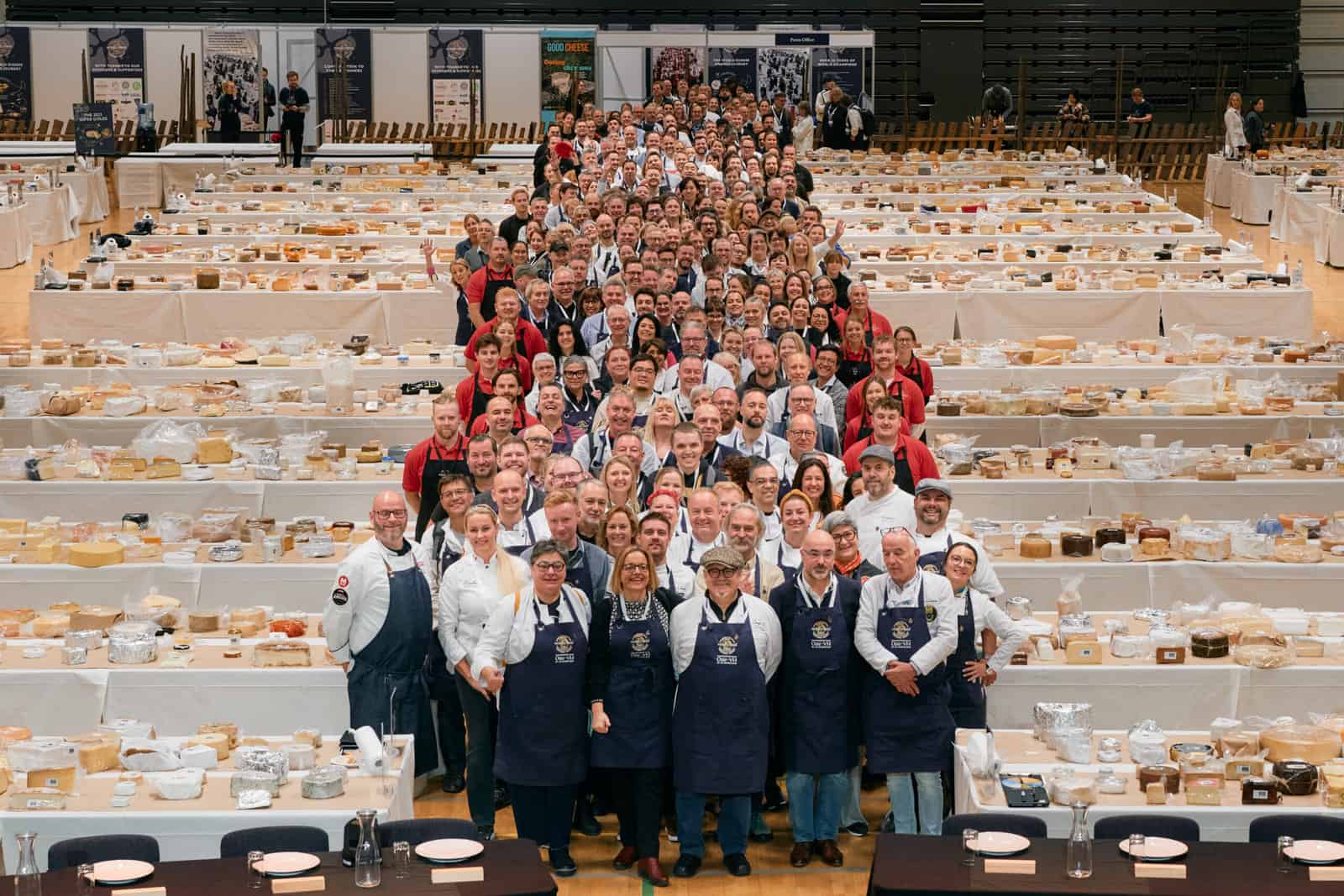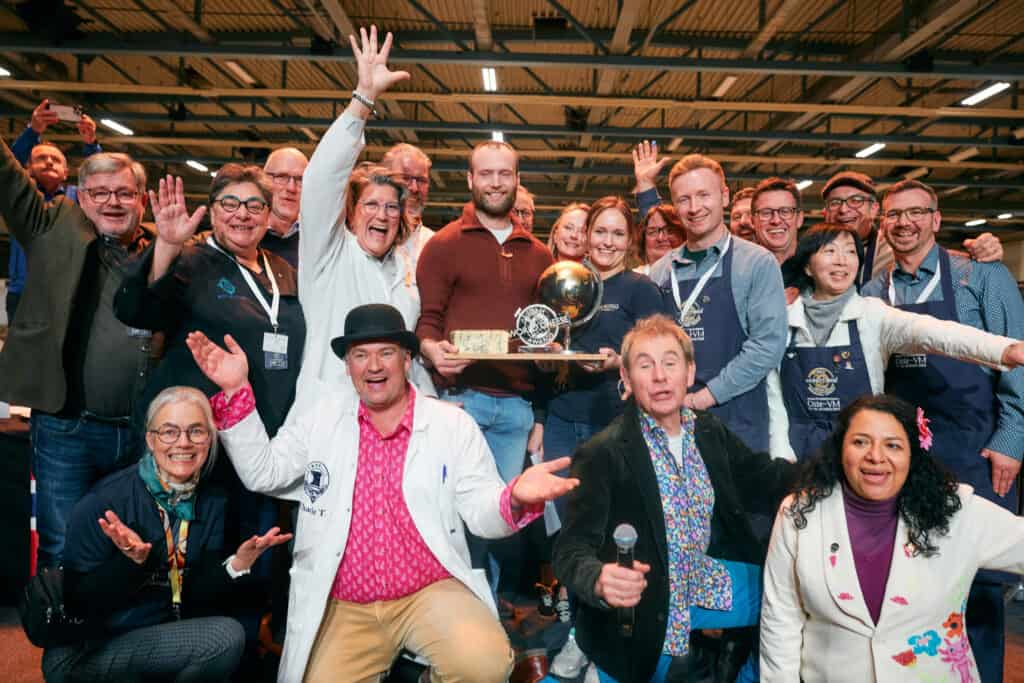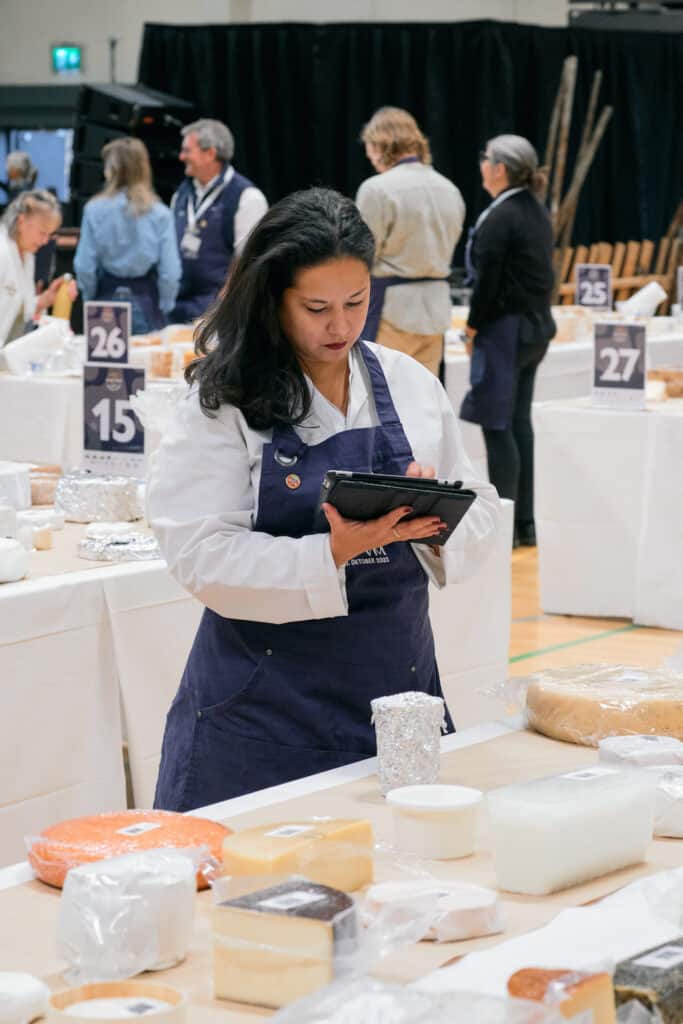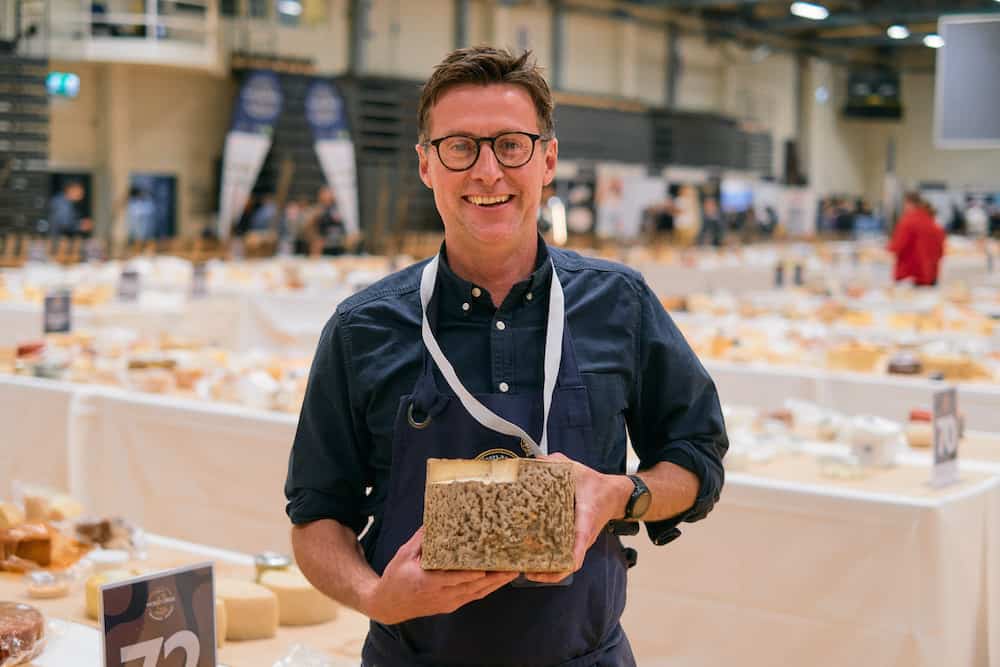
The group of 264 World Cheese Awards judges — Credit Guild of Fine Food (Berre / Haaken Borgen).
From a numbers perspective, the World Cheese Awards (WCA) is impressive. The 35 th annual awards in Trondheim, Norway featured 4,502 cheeses—293 from Norway alone—submitted by 954 cheesemaking enterprises, 92.77 percent of which were from outside of the UK, where the awards originated and the organizing body, the Guild of Fine Food (GFF), is located. The jury panel included 264 judges from 38 nations, who worked in teams of two or three to evaluate 40-45 cheeses based on visual appeal, texture, aroma, and flavor. Each team chose one Super Gold cheese, and these 100 standouts then went on to a Super Jury of 16 experts, who each selected one to champion for the finals.
But, as they say in sports, the numbers don’t tell the whole story. In fact, it is the weaving together of many, many stories—from a global collection of cheesemakers and mongers, journalists and authors, chefs, and retailers—which makes the WCA so memorable for those of us who have the good fortune to play a role in it as judges.
I met Emma Young (aka the Cheese Explorer), a bubbly and enthusiastic cheese instructor, consultant, and most recently, author, from London at my first World Cheese Awards in Oviedo, Spain in 2021. Young has been a WCA judge for 12 years, starting early in her cheese career. At a dinner connected to the Great Taste Awards (also hosted by the GFF), she “was fortunate to be sitting at a table with (GFF Director) Tortie Farrand, and she asked if I would be keen to judge as new blood,” Young says. “I obviously said, ‘What, me? Yes, are you sure?’ And a million thank you’s.” Participating in the WCA has been beneficial to her career, she says. “It’s hard not to sound impressive when adding ‘World Cheese Awards’ judge to your CV. It’s helped to enrich my experience, making me visible to potential cheesemaker and retailer clients.”
Before and after the awards, WCA judges can visit local cheesemakers, restaurants, and artisan food producers they might not have had the chance to experience on their own. Young cites visiting a producer of Queso Casin in Asturias, Spain, as a highlight. “This a cheese that I had never encountered before visiting Oviedo, nor had it ever been on my radar,” she says. Young was introduced to the staggering variety of Norwegian cheeses at the Bergen awards in 2018, but for some judges, including me, Trondheim offered the first opportunity. “One of the joys of the World Cheese Awards is to discover local products which are not exported, and which can only be found in their production area,” she says. “It’s a testament to the Guild of Fine Food and their partners for making this happen.”
Food journalist, teacher, and author Patrick McGuigan has judged the WCA since 2010, when they were still held at the National Exhibition Centre in Birmingham, UK, as part of a larger food show. A resident of Brighton, UK, and member of the Super Jury since 2014, he has had a front row seat for the evolution of the awards.
“It’s definitely become more international, not just in where it takes place, but also the people who are judging and the number of cheeses from abroad—everything around it is more international now,” he says.
To help cheesemakers get their products safely to the WCA location, the GFF establishes consolidation points where the cheeses are shipped by a certain date, collected, and transported to the event. This year, there were 18 such points in Europe, North America, South America, Africa, and Australia. “I tried cheeses from Kenya, Japan, Brazil—countries that you think: how on earth do these cheeses get to Trondheim, or Oviedo, or Bergamo?” says McGuigan. “It’s a difficult thing, and they do a really good job.”
In championing a cheese for the finals, he goes for the unusual—in Trondheim it was Lamucca Di Castagno from Romagna Terre, Italy, a cow’s milk cheese coated with chestnut leaf powder and aged for three to six months. “I like to give lesser-known cheeses their day in the sun; they always seem to split people’s opinion on the jury, so my cheeses are probably never going to win,” McGuigan says.
He recalls two especially noteworthy finals, including in San Sebastian in 2016, when a Norwegian blue, Kraftkar, took the top prize. “It was an incredibly emotional moment, because this blue cheese that nobody knew what it was, won, and there was this Norwegian guy in the crowd, Gunnar (Waagen from Tingvollost)—he came down, and tears were flowing; I was welling up in the background.” The other final, “just for shear tension and drama, was when Rogue River Blue won in Italy, beating a Parmigiano Reggiano in the final,” he says. “It was a tie, and Nigel Barden, the head judge, had to make a decision in front of 400 Italians, which is a lot of pressure. To stand up and say, ‘I’m going with the blue cheese’—he didn’t know where it was from—was pretty impressive. And for me to find out it was an American cheese, I was like ‘wow,’ what a great story.”
Finals drama aside, what judges point to most often when talking about their WCA experience is the joy of connection. “Trondheim was a gorgeous place to be, the weather was on our side and there were multiple opportunities to learn about the local culture of cheese and to network with like-minded individuals from all corners of the cheese industry,” says Young.

“I’ve met Mongolian cheesemongers; I’ve met Italian affineurs of Taleggio, I’ve met American cheesemakers and farmers, and I love that breaking down borders and barriers and people learning from each other and sharing information and having a good time,” says McGuigan. “You judge together, you eat together, and you all go to the pub, or on a tour. And I think that’s really important, not just for cheese, or the cheese industry, but in terms of life.”
He also credits the WCA for helping to develop cheese knowledge in countries like Japan, “where cheese hasn’t been a big part of their food culture, historically. People see what others are doing and take that away and use it as a springboard to create something completely new and different, which adds to the diversity and richness of food, which is quite a profound and important thing—the melting pot of bringing all these people from different backgrounds together. We need to do more that, I think.”
Indeed, we do.





